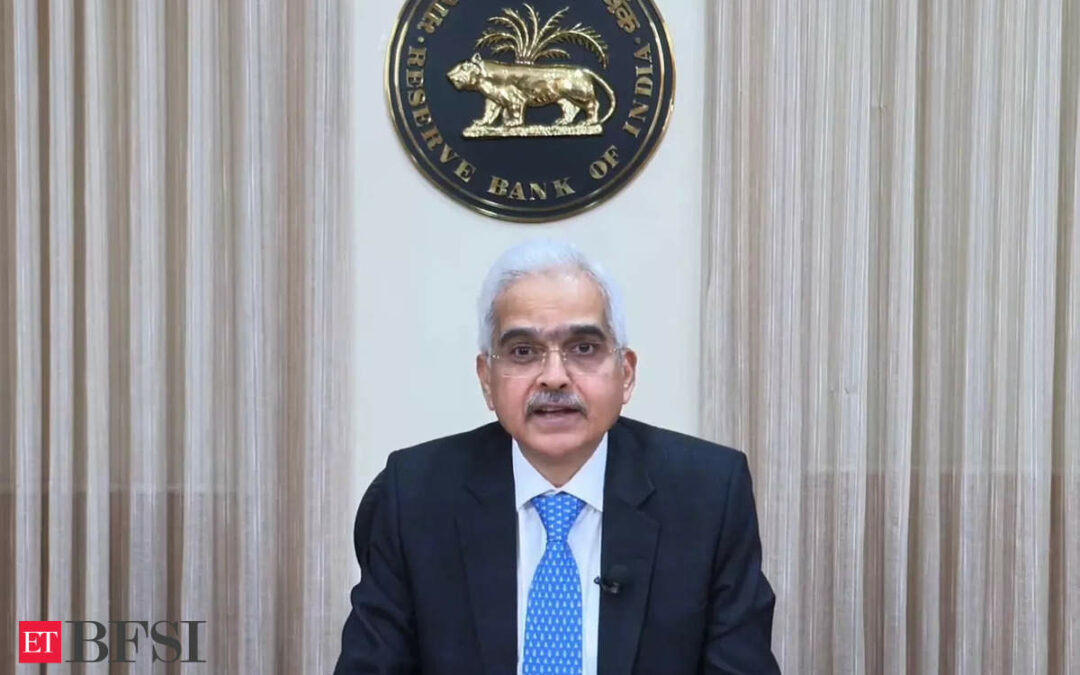The Reserve Bank of India’s rate-setting panel Monetary Policy Committee (MPC) is most likely to keep the repo rate unchanged at 6.5 per cent for the sixth consecutive time. However, economists say that there may be a change of stance from ‘withdrawal of accommodation’ to ‘neutral’.
RBI Governor Shaktikanta Das will announce the decisions of MPC’s last bi-monthly meeting of FY24, which began on February 6, on Thursday.
According to an ET Poll of 12 economists, there won’t be significant rate adjustments. However, some economists suggest that a fiscally prudent interim budget and indications of global monetary easing might compel the central bank to tweak its stance on tight liquidity, which has pushed borrowing costs above policy rates.
While opinions vary among respondents, with two respondents predicting a shift in stance to ‘neutral’ from the current withdrawal of ‘accommodation’’, several suggest that the RBI’s language could indicate a growing tolerance for easing liquidity conditions.
“We expect the committee to maintain the monetary policy stance pointed towards a withdrawal of accommodation despite deficit liquidity conditions, but the communication is likely to turn materially less hawkish,” Rahul Bajoria, head of emerging markets Asia economics, Barclays, told ET.
Time to accommodate a neutral stance?
A neutral monetary policy stance allows the RBI to be more flexible in managing liquidity. This means they can adjust financial conditions either by loosening or tightening them. Currently, the focus is on reversing the accommodating conditions, which means the RBI is trying to reduce the amount of money in circulation.When the RBI is more ‘accommodative’, it means they are increasing the money supply to stimulate economic growth. During the COVID-19 crisis in 2020-21, the RBI pumped in a lot of money into the banking system to keep borrowing costs low and encourage spending.
In April 2022, the RBI started moving away from the accommodating stance. As a result, over the past six months, there has been a shortage of funds in the banking system. Banks have been borrowing heavily from the RBI, reaching a multi-year high of over Rs 3 lakh crore in January.
Fight against inflation continues
While retail inflation has decreased from its peak of 7.44 per cent in July 2023, it remains relatively high, standing at 5.69 per cent in December 2023. However, this figure still falls within the Reserve Bank’s comfort range of 4-6 per cent.RBI’s Das and his team will maintain a vigilant approach towards inflation, matching the Arjuna eye.According to a report by the State Bank of India (SBI), the RBI is anticipated to uphold its stance of pausing any further policy changes in the upcoming meeting
“Strong US non-farm payroll data and wages seem to have pushed back on market expectations for a quick pivot to rate cuts,” it said, and added the first rate cut on the table could be from June to August period “looks the best bet now”.
On expectations from the policy, Raoul Kapoor, Co-CEO of Andromeda Loans, said the RBI is anticipated to maintain the current interest rates. “This decision is primarily influenced by the persistent challenge of high retail inflation, which remains uncomfortably close to the upper limit of the RBI’s inflation target at 6 per cent. The current inflationary pressures necessitate a cautious approach,” PTI quoted him as saying.
Madan Sabnavis, Chief Economist, Bank of Baroda, said the MPC is likely to maintain an unchanged approach in terms of both rate and stance.
“This is so as inflation, as per the December data, is still high and there are pressures on the food side. This is notwithstanding the fact that core inflation has come down,” he said.
Cues from Sitharman’s Fiscal Prudence Roadmap
It will be crucial to observe how the RBI aligns itself with finance minister Nirmala Sitharaman’s fiscally prudent budget, unveiled on February 1, 2024.
In her sixth budget, Sitharaman aimed to reduce the fiscal deficit target to below 4.5 per cent of the GDP by 2025-26, setting it at 5.1 per cent for 2024-25, lower than the revised 5.8 per cent for 2023-24.
India’s goal is to narrow the budget shortfall, relying on optimistic tax revenue projections despite increased spending in an election year, as Prime Minister Narendra Modi seeks a third consecutive term.
Sitharaman emphasized continued fiscal consolidation during her budget speech, targeting a fiscal deficit of 5.1 per cent of GDP for 2024-25. This lower deficit goal is anticipated due to anticipated strong tax collections, rationalized expenditures, and reduced spending on subsidies.
Additionally, Sitharaman proposed a significant 11.1 per cent increase in the capital expenditure target to a historic Rs. 11.11 lakh crore for the next fiscal year. This move aims to stimulate demand and consumption in the economy, which aspires to become the world’s third-largest by 2030.










